There has been a lot of emphasis recently on the short game, which is great. Improving your greenside play is a logical way to save shots. At the other end, hitting the driver captures the imagination of every golfer. But in the middle – and what has gotten a little lost – is iron play, which is really the guts of the game. Truth is, if you hit even a decent drive, your opportunity to score depends on what you do with your second shot. Hit the green or leave it in a good place, and you’ll have a great chance. But botch that second shot, and you’re cooked. Let’s take a look at the faults that prevent most average golfers from hitting good approaches, from the longer irons down to the wedges. We’ll get you making better contact and controlling the ball so you can start turning those double-bogeys into pars. — with Peter Morrice
- You Swing Too Hard with the Long Irons
∇ When you have a long iron in your hands, you’ve got a ways to go – and I’d bet you’re not exactly full of confidence. Most golfers swing the longer irons back too far so they get a bounce effect at the top. That means they “throw” the club starting down and lose the wrist angle [below]. The throw also pulls you away from the target. Those two things cause the club to bottom out behind the ball. You hit a fat shot or a drop-kick, or if you do catch it flush, you don’t have much on it. Whatever, you’re not getting to the green.
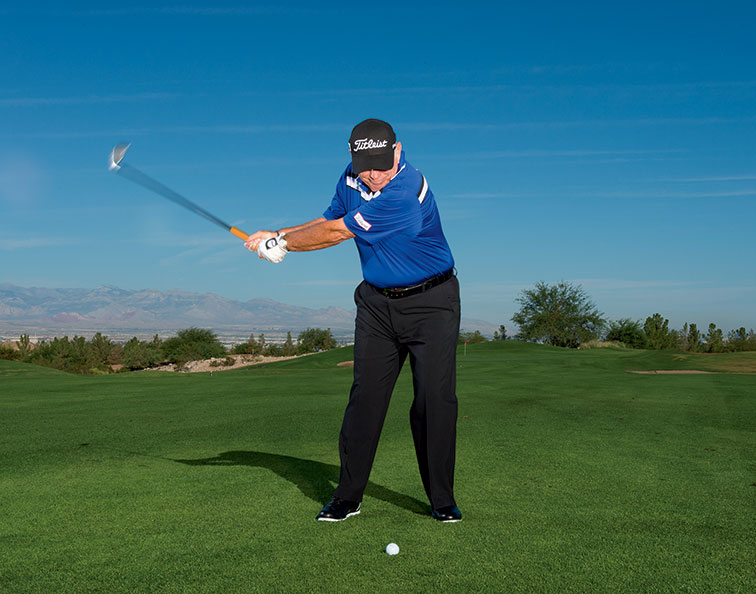
Δ First, keep your backswing in check. Think shorter and wider, pushing your hands away from your head at the top. Then, start down by shifting to your front side. Get some pressure back in your front foot. And resist the urge to add any extra hit on the ball. Yes, you’ve got to hit a long shot, but good contact is the key to distance. The club will build speed through the ball, if you let it. With your weight left and your wrist angle intact halfway down [below], you’ll catch the ball first and brush the turf after impact.
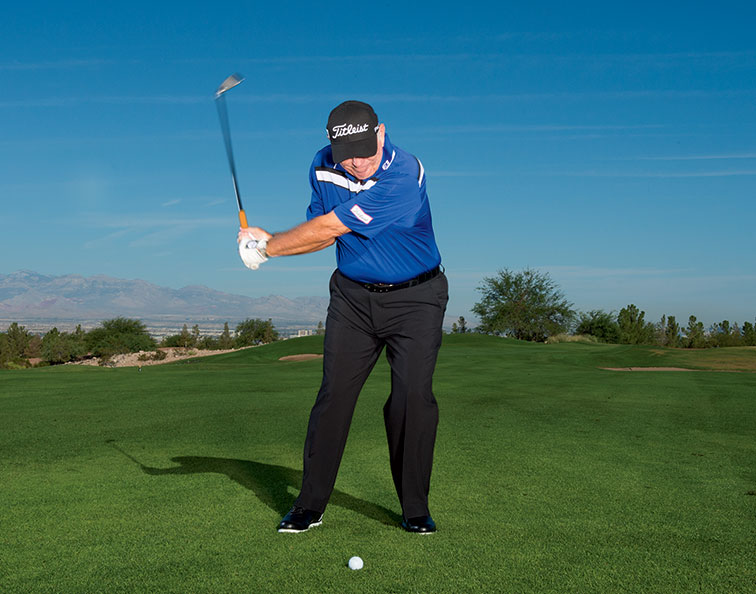
- You Try to Help the Ball Into The Air
∇ With the middle irons, most golfers think they can reach the green. The problem is, they try to lift the ball off the ground to hit it high. They start by playing the ball too far forward in the stance and then hang on the back foot and try to scoop it up. But the trademark look of the lifter is coming up and out of the spine angle on the downswing [below]. Once the upper body straightens up, the clubhead comes up, too, and that causes thin contact, even topped shots. Hitting up on the ball might feel right, but it’s an absolute killer of solid contact.

Δ You have to get it into your head that hitting down and through the ball is the best way to produce a high shot. Remember, the instinct to lift usually results in a lower flight because of poor contact. You need to feel more “on top of” the ball at impact, with your chest facing down [below]. Play the ball middle, make a wide backswing, then drive your entire right side – knee, hip and shoulder – through the shot. Another good thought is to hit with the back of your left hand facing the target. You’ll stop scooping, I promise.
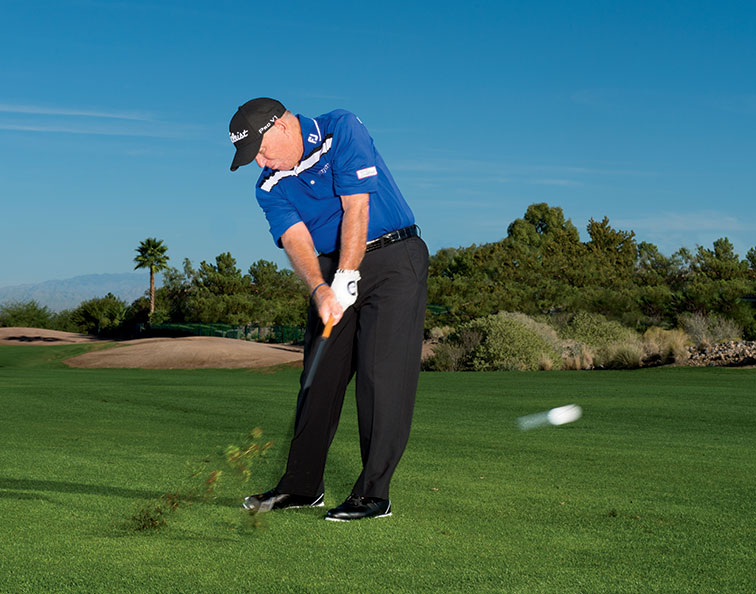
- You Let Your Ego Dictate Club Selection
∇ The golfer’s ego is a terrible thing. There’s something about saying “I hit wedge into that green” that gets players excited. But trying to stretch your distances, especially with the short clubs, screws up your control. When you want to smash it, you typically play the ball too far back and push your hands ahead. You’re trying to turn that wedge into a longer club. On the downswing, the upper body takes over, pushing the club onto an out-to-in path. The finish is long and tipped back [below]. If you hit it solid – unlikely – it’s usually a pull.
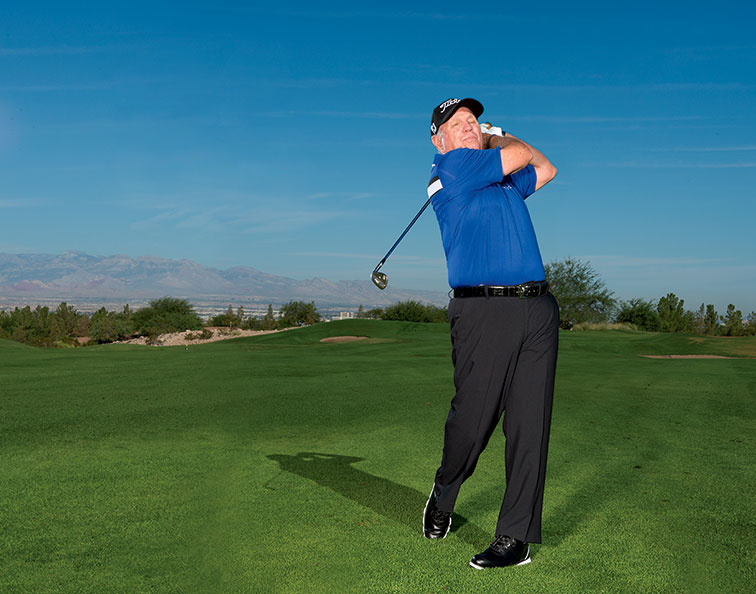
Δ Forget that you once hit a wedge 120m. You must’ve gotten lucky and caught it solid with a wild swing. A better strategy is to take an 8 or 9-iron and use a three-quarter action. Centre the ball at address, and swing back without any conscious wrist hinge. Then focus on turning your torso to face the target [below]. Try for more of a punchy follow-through, your hands finishing in front of you or even with your head, not dropping the club down your back. With the short clubs, control beats speed every time.
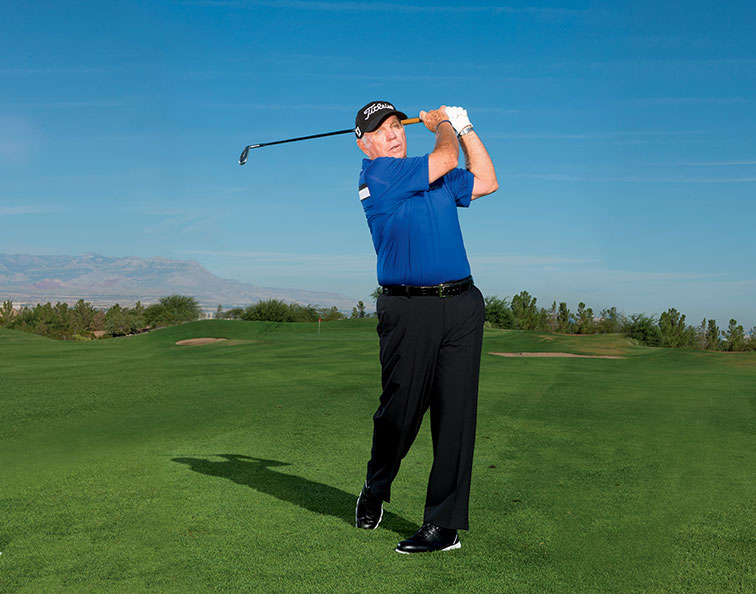
- You Always Mess Up Downhill Lies
∇ Downhill tee shots are sweet, but when average golfers face a downhill lie to the green, things get ugly fast. Usually, they don’t make any adjustments, which pretty much guarantees a clunky strike. And if they do anything different, they lean back – into the hill – because it feels more stable. Try to resist that urge. Leaning back tips your shoulders upward [below] and promotes hitting behind the ball. Whatever you’re doing at address, the downslope is making you feel awkward so you end up making an awkward swing.
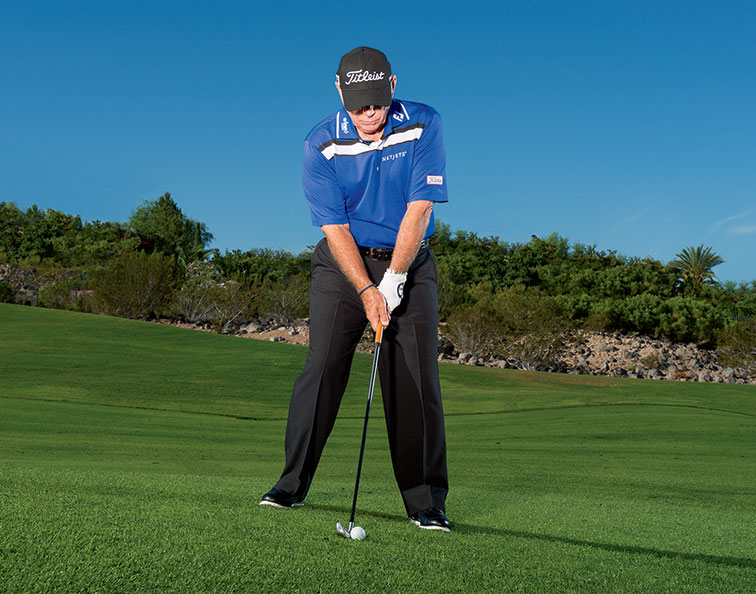
Δ This one is easy to fix because the changes you need to make are in the setup. For this to play like a level lie, fit your body to the downslope. Feel like you set your shoulders parallel with the slope – you won’t actually go that far, but that’s the feel you want [below]. Position the ball back a little in your stance, and aim more to the left because it’s harder to square the face at impact from a downhill lie. Then just swing down the slope. As with all these shots, solid contact is the key. Swing in control, and you’ll hit more greens.
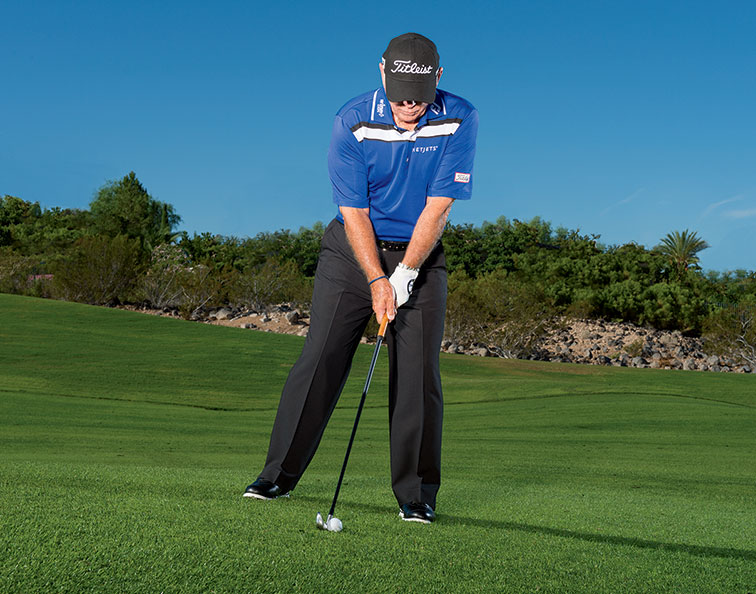
Stats: how often do 80, 90 and 100-shooters hit the green?
From 115 metres: 64% (80) / 46% (90) / 28% (100);
From 135 metres: 54% (80) / 39% (90) / 20% (100);
From 160 metres: 43% (80) / 31% (90) / 13% (100)
— shotbyshot.com



